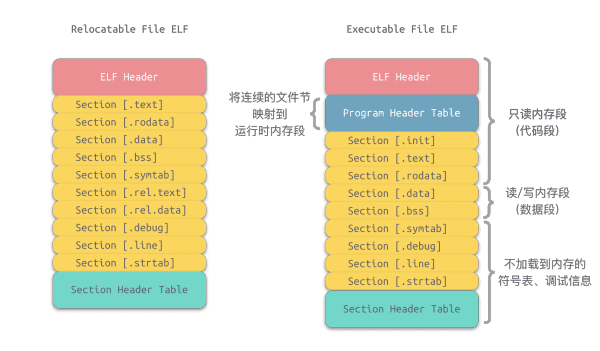Operating System | Compiliation Process
Compliation process
Process Graph
General Description
- General Compilation (1,2,3)
- translates source code file to machine code file respectively
- leaves undefined functions/symbols to be filled in by linker
- Link
- links the object code with the library code to produce an executable file
Specific Description
- Preprocessing
-E
- Removal of Comments, Expansion of Macros, Expansion of the included files.
- The lines in our code that begin with the “#” character are preprocessor directives.
- Compilation
-S
- translates the preprocessed code to assembly instructions specific to the target processor architecture.
- Assembly
-c
- translates the assembly instructions to object code. The output consists of actual instructions to be run by the target processor.
- leaves the addresses of the external functions undefined, to be filled in later by the Linker.
- The contents of output file is in a binary format and can be inspected using
hexdumporod
- Linking
-o
- fill in the addresses of all the external functions (to be called) with the actual definitions
- combine object files and libraries into a single executable file, make program run.
Executable file: Can be loaded (copied) into memory and executed
linking Type
static linking:
when
at compiling time , has two major tasks:
- Symbol resolution: It associates each symbol reference with exactly one symbol definition .Every symbol have predefined task.
- Relocation: It relocate code and data section and modify symbol references to the relocated memory location.
static lib
The linker copy all static library .a (unix), .lib(windows) used in the program into executable image.
features
- pros:
- does not require the presence of library on the system when it is run
- faster and more portable
- less error chance.
- cons:
- more space of both memory and executable file.
dynamic linking
when
- load-time (when program is loaded into memory and executed by the loader)
- usually for fixed functionality (e.g. C run-time library)
- run-time (load a dynamic library when need it)
- pros:
- more dynamic functionality such as plugin loading through
LoadLibrary()API; - lazy mode: speed up program startup
- more dynamic functionality such as plugin loading through
- cons: need to manage lib loading/freeing and function lookup manually
- pros:
dynamic(shared) lib
Multiple processes could load the same dynamic library .so(linux), .dll(windows), .dylib(macosx). There are only one physical copy of the library code in system memory. Every process can have access to that library code at any virtual address it likes.
features
- pros:
- less space of both memory and executable file.
- easy library update
- cons:
- more chances of error and failure
ELF Format
- load to memory
- .text : program code
- .rodata : const variable, const string
- .data :
initializedglobal and static variables - .bss:
uninitializedglobal and static variables
- only in relocated ELF
- symtab: symbol table
- .ref.text : relocation info for .text section (addresses of instructions that will need to be modified in the executable)
- .ref.data: relocation info for .data section (addresses of pointer data that will need to be modified in the merged executable)
Reference
All articles in this blog are licensed under CC BY-NC-SA 4.0 unless stating additionally.
Comment



